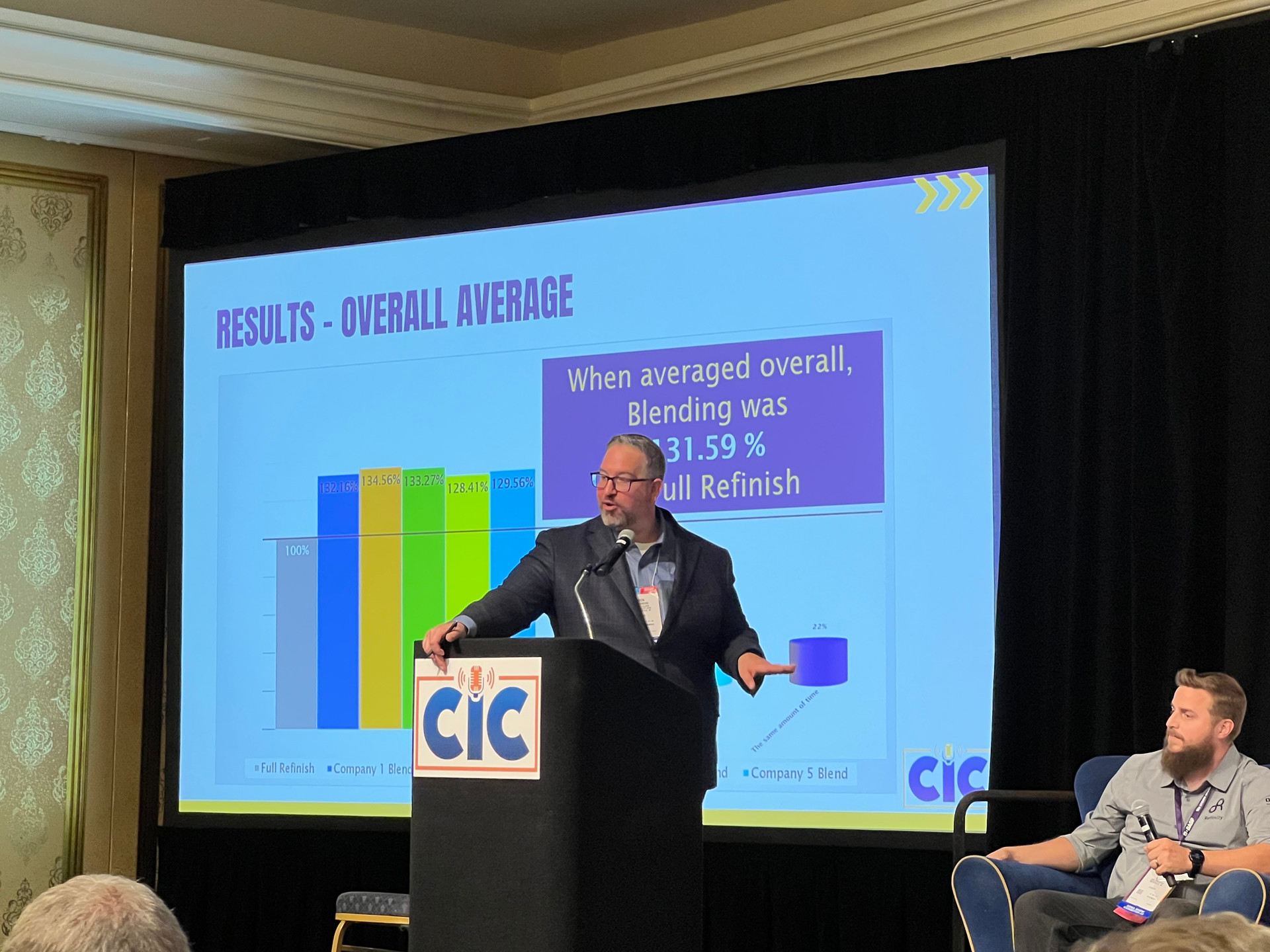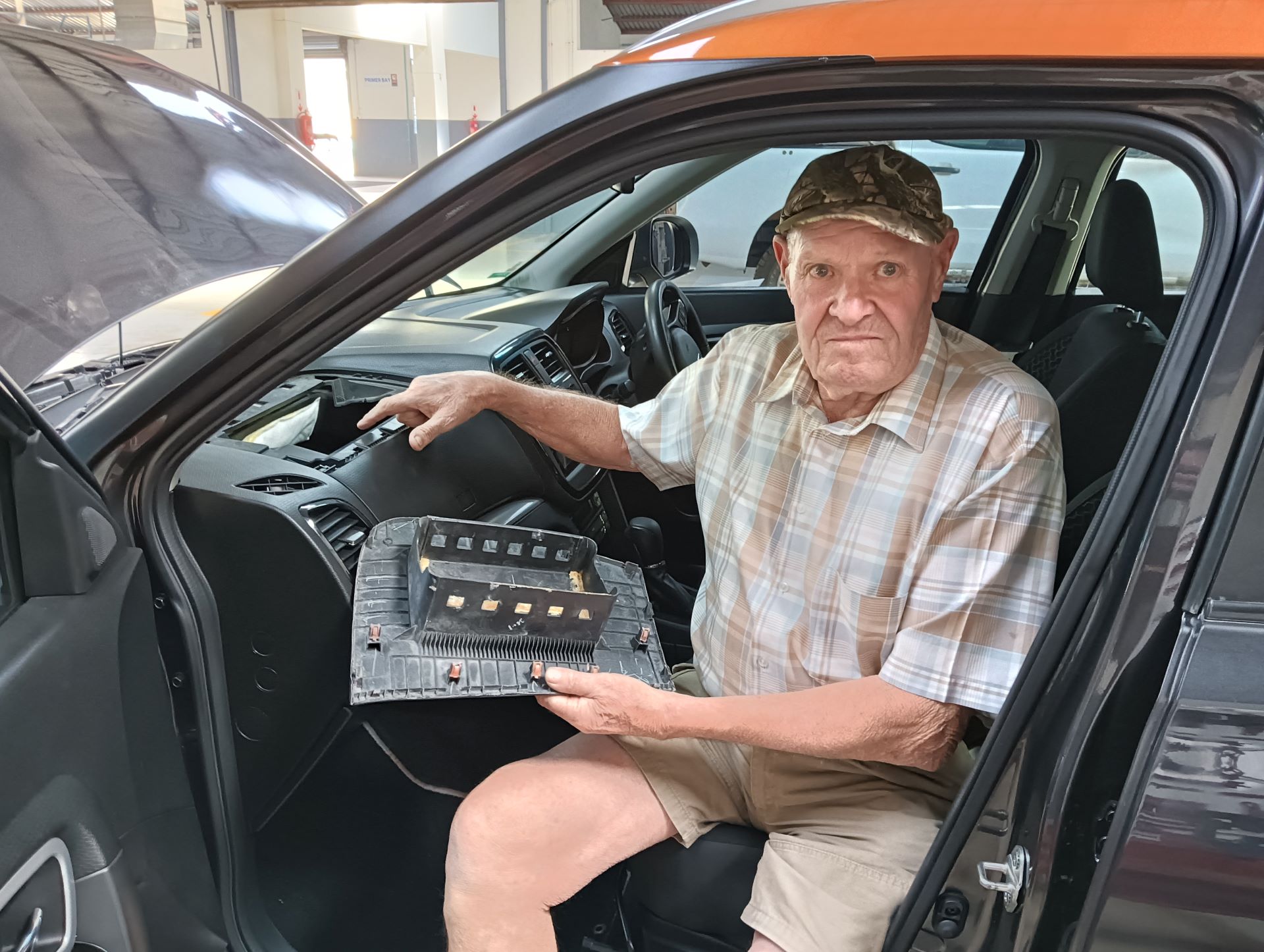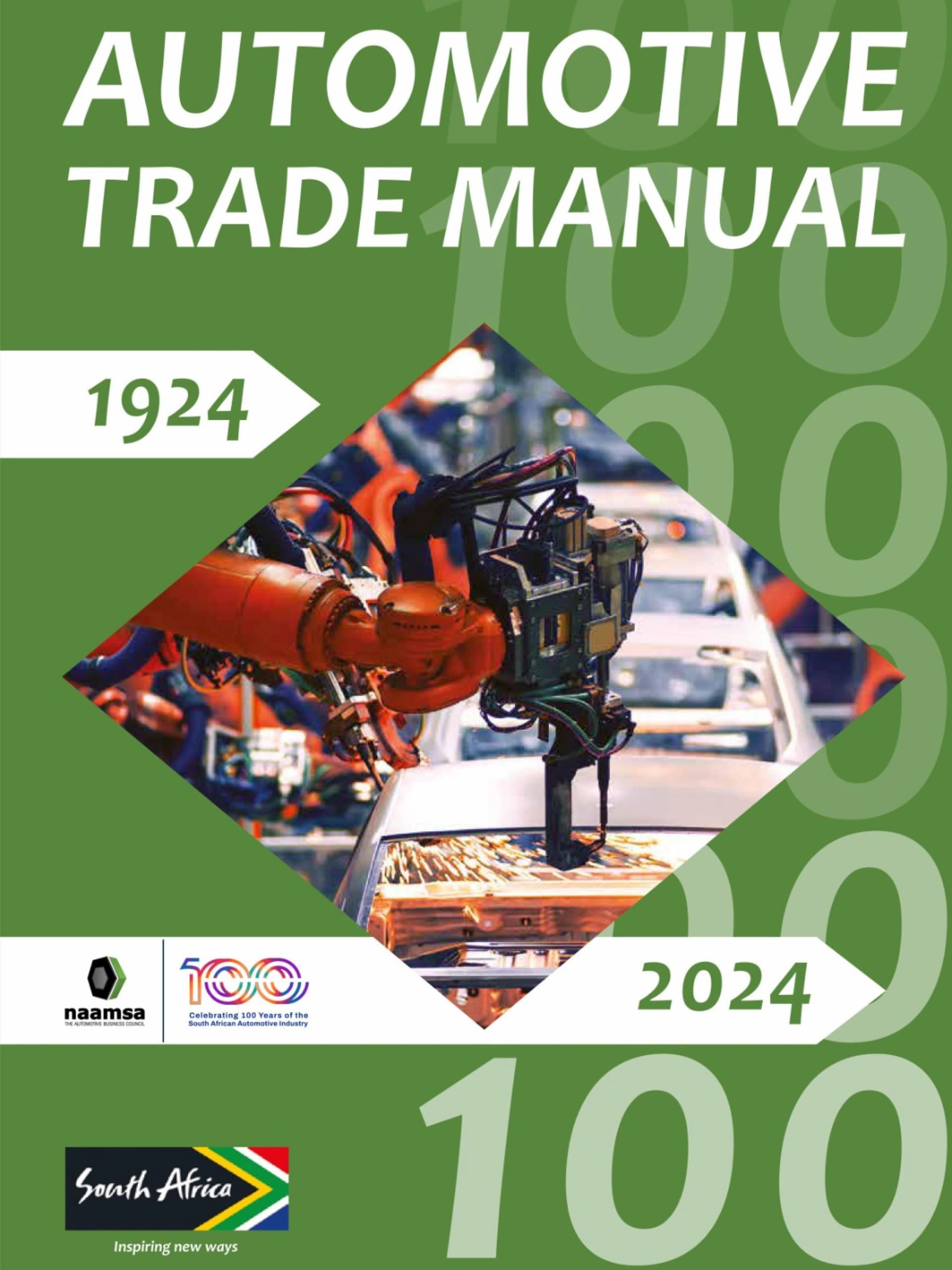In the first study of its kind, the Society of Collision Repair Specialists (SCRS) asked five major North American refinishing companies to participate in a comparative analysis to determine if a difference exists in the time it takes to blend a panel compared to a full refinish.
Historically, the three primary information providers in the United States – Audatex, CCC / MOTOR, and Mitchell – have defined their own refinish times and established the labour for a blend on a two-stage refinish by using a formula of 50 per cent of the full refinish value.
However, the industry perceives that performing a blend is more time-consuming, prompting the study.
SCRS set out to do a comparative analysis of the two refinish operations and found that blending, on average, took 31.59 per cent more time to complete. The results were shared in November during the Collision Industry Conference (CIC) meeting in Las Vegas, Nevada, as part of a CIC Parts & Materials Committee update.
“The findings suggest that the concerns expressed by our members have not been unfounded,” said Aaron Schulenburg, Executive Director of the SCRS. “These results very clearly establish that performing the processes necessary to blend a panel does not take less labour than the processes to fully refinish a panel.”
To achieve a proper colour match, North American refinishing companies recommend blending a panel adjacent to a panel being replaced or repaired.
“The industry has largely felt that that 50 per cent formula that is the same across all three companies is not reflective of what’s experienced on the shop floor within the facilities in comparing what it takes to blend versus fully refinish a panel,” said Schulenburg.
With the support of five major refinish companies – AkzoNobel Vehicle Refinishes, Axalta Coating Systems, BASF Automotive Refinish, PPG Industries, and Sherwin-Williams Automotive Finishes – SCRS organised a week-long blend research project in August.
First, they compared the amount of labour time expended to complete a full refinish to the exterior of a new and undamaged OEM part. Then, they compared that to the amount of labour time expended to blend for colour match as though the same identical panel was an adjacent panel. It was important to note that the new parts were not all free of damage and no repairs were made to the any of the panels to ensure only the two different refinish operations were considered for comparison (full refinish versus blend for colour match).
Each refinish company asked an experienced technician to participate in the process. “We didn’t use average technicians,” said Schulenburg. “We used the individuals responsible for teaching, training, and developing curriculum.”
Most companies used pre-mixed colour and each followed its process for refinish and blend. Efforts were made to ensure there were some consistencies during the testing, such as flash times, washing with soap and water, and how parts were masked.
The research was held at the Global Finishing Solutions (GFS) Center for Excellence at its headquarters in Osseo, Wisconsin. “We looked at a lot of different options, and GFS was a fantastic location and support system,” said Schulenburg.
Ford Motor Company donated 45 new OEM parts, including bonnets, fenders, and front door shells from a 2018 F-150. “We selected this vehicle specifically because it was the number one most appraised truck in 2021,” said Schulenburg.
The parts were later donated to Chippewa Valley Technical College in Eau Claire, Wisconsin, along with 10 parts stands provided by 3M and SCRS, and additional materials from the project.
The study was monitored by Dekra North America, which provides comprehensive testing, inspection, certification, and consulting services. Nick Saltamanikas, Collision Operations Manager for Dekra, said it is the largest private auditing company in the world.
“All the processes the manufacturers were supposed to follow during the painting and blending procedures were all followed, and the times are accurate,” he said.
Schulenburg stressed the importance of describing the study as a comparative analysis between two refinish operations rather than a time study, because they did not look at the entire process or the full list of included items, track the administrative steps, or use a vehicle in the analysis.
“All three IPs establish their own labour value. We aren’t refuting that. We aren’t objecting to it,” said Schulenburg. “We aren’t saying that one labour value is right, and one is wrong.”
Bill Bierie, Application Manager North America at BASF, said: “We all jumped in right from the beginning and really saw it as a problem that we all needed to address and work together to come up with a process to do this test and do this evaluation.”
Gary Kilby, Curriculum Designer at Sherwin-Williams, said: “It’s very important for our customers to make sure they’re adequately compensated for what they do. To actually get involved as a member and do some studies that give real-time data, we’re extremely excited.”
According to Robb Power, Senior Manager Automotive Refinish Solutions at PPG, some of the elements of the study, such as using standardised panel and colour usage, led to consistent results.
“We eliminated those things that would create additional variation,” he said. “What’s remarkable to me with all the different companies and some different processes, is how close the ‘deltas’ are between each of the companies.”
Don Shearer, AkzoNobel North American Technical Manager, said the study is very relevant from a quality standpoint. “Achieving proper colour match is everything,” he said. “Colour plays a major role in what we do, and blending should take place on regular, everyday colours, not to mention the complex colours that we deal with… you have to blend for predictable results and yet you have to make sure that you aren’t giving that customer diminished value on the car.”
Bruce Halcro, SCRS Chairman and owner of Capital Collision Center, said: “As I watched each one of the companies prep the blend panels and the time that it took to do them, I had a pretty good idea that the results were not going to be anywhere near that 50 per cent mark.”
Mark Jahnke, Technical Coordinator at Axalta, said: “I think it’s huge. When have we had five of the major paint companies get together and look at something that’s been a given in the industry? Nobody has really taken the time to look at it and challenge it to this extent. I think this is a good step for our industry.”
To download the Blend Study Report: A comparative analysis between full refinish and blend operations, visit www.scrs.com/blendstudy.





